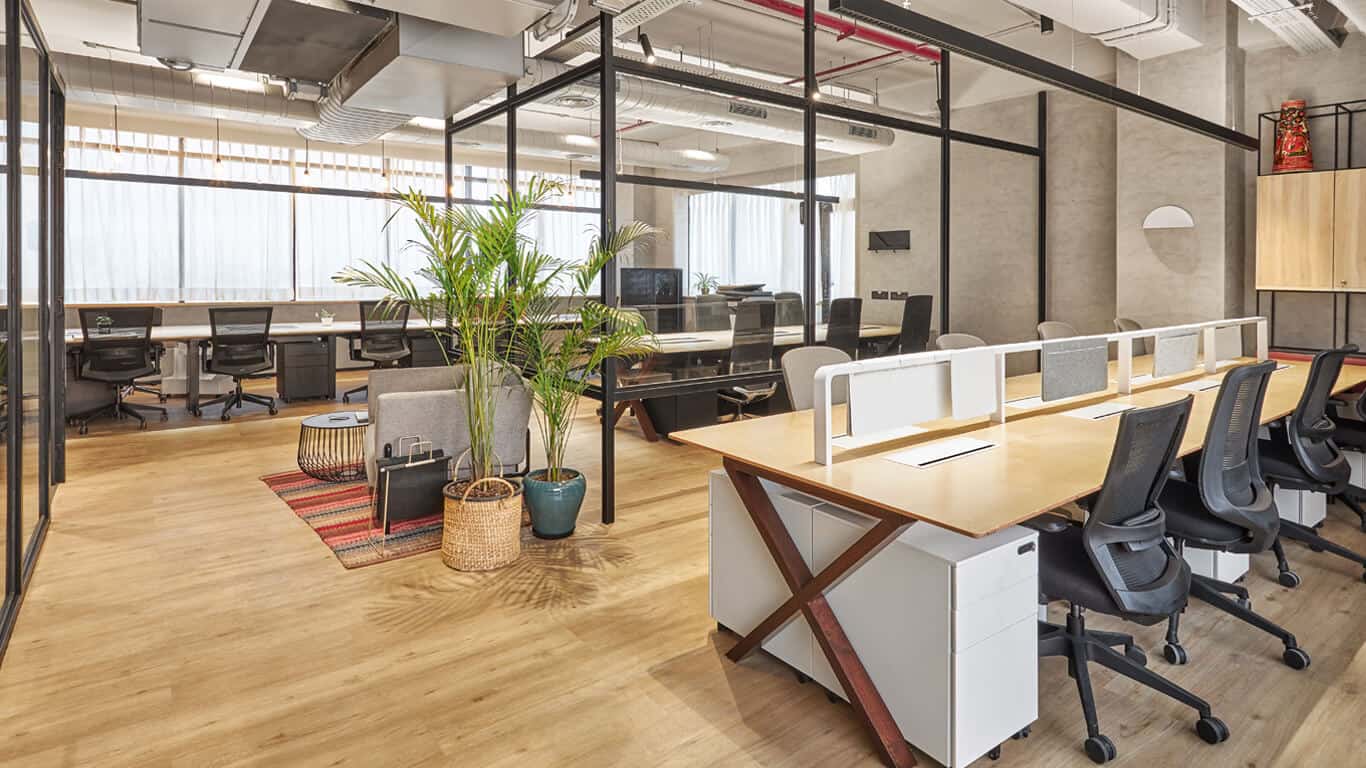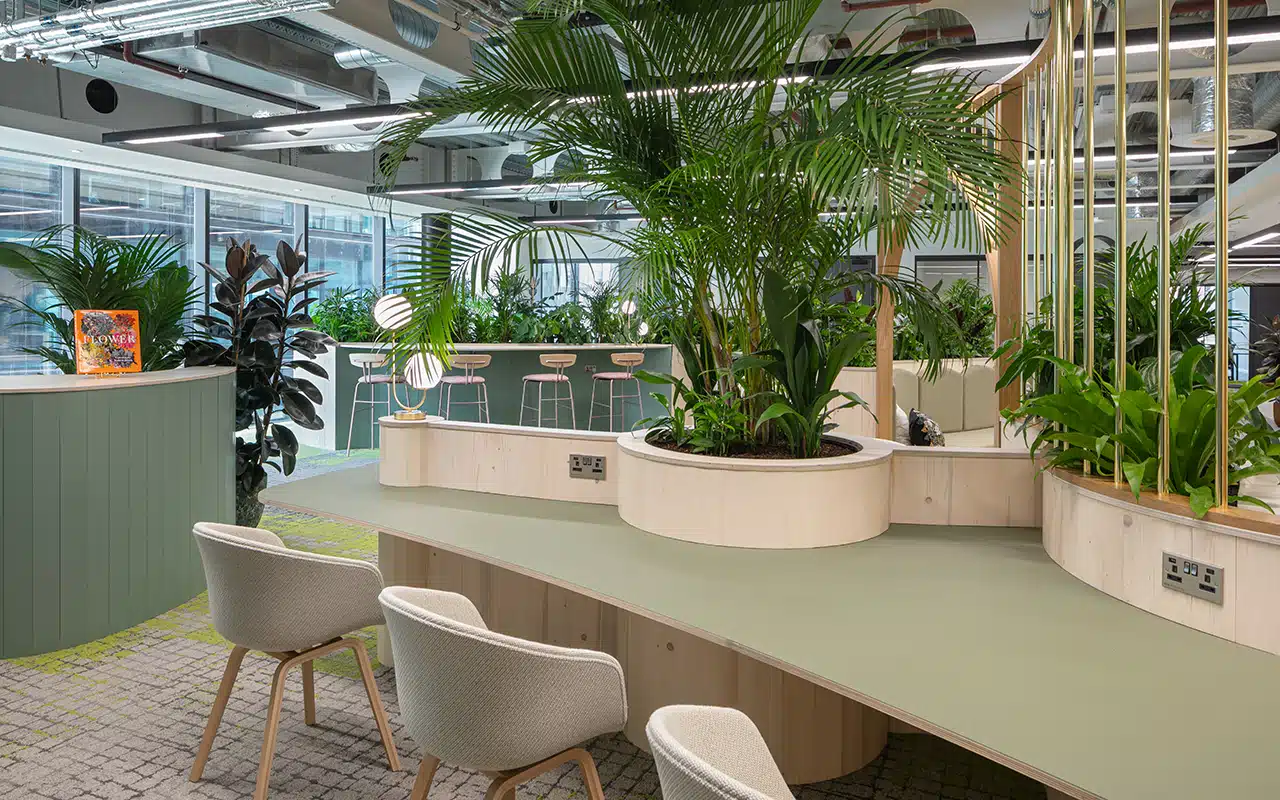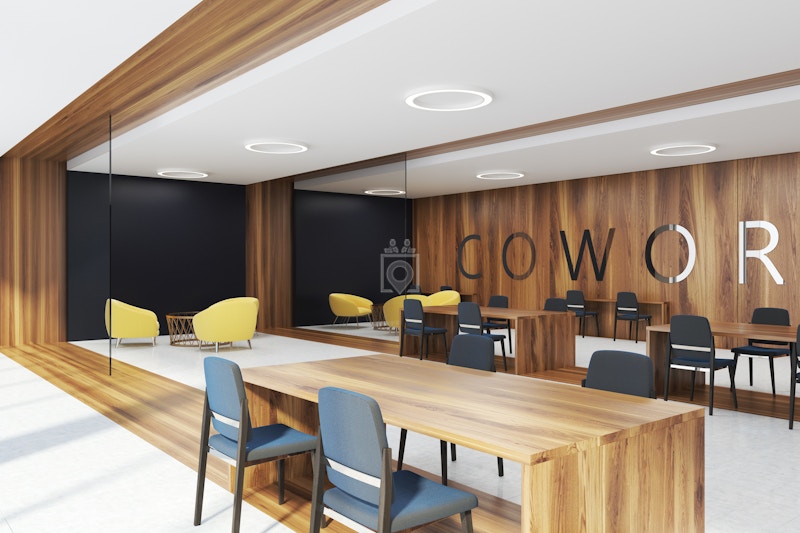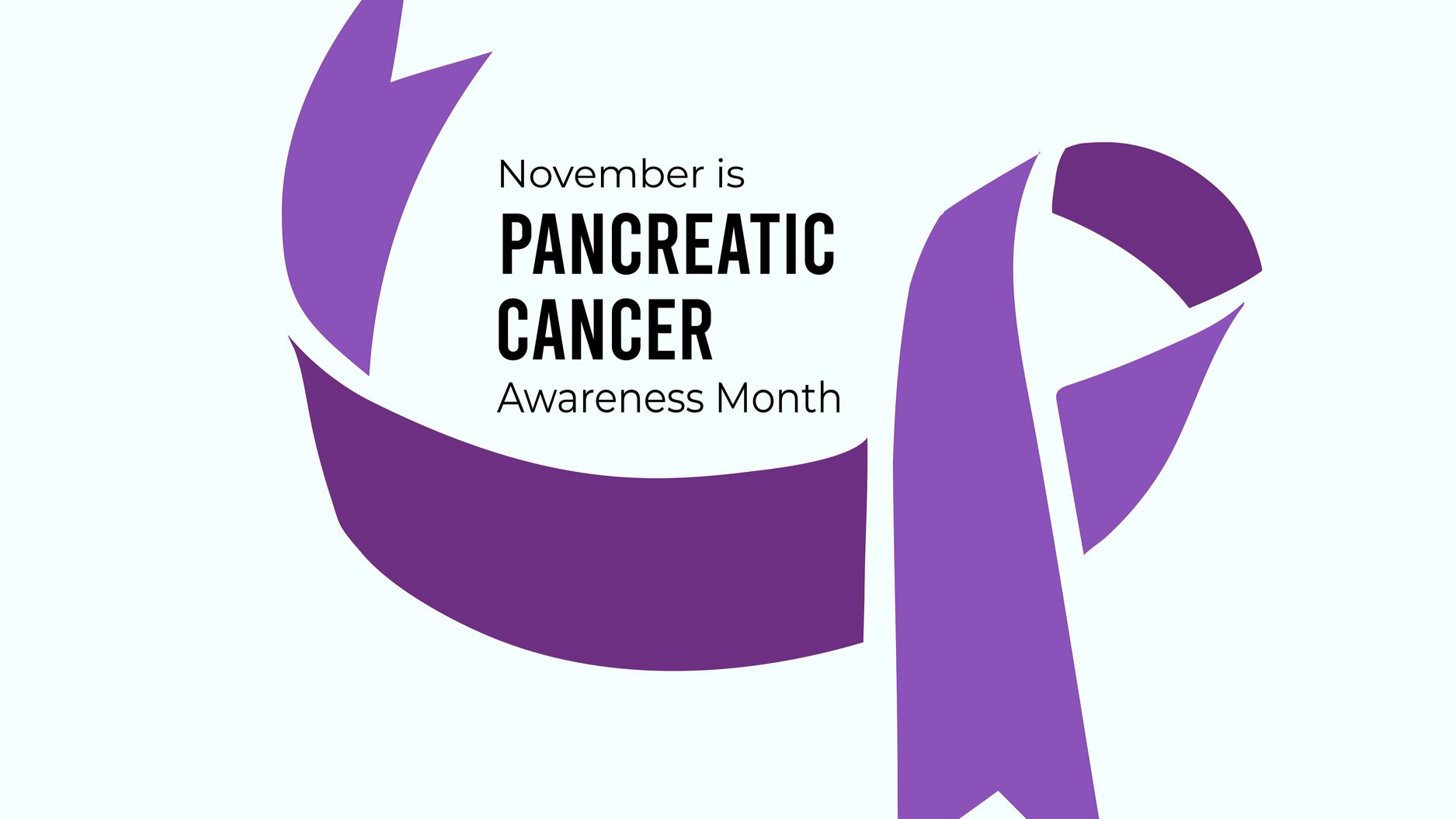The Rise of Non‑Boring Workspaces

For decades, the workplace was imagined as a box: identical desks in rooms, grey partitions dividing tasks, fluorescent lights humming at constant frequency. Offices were built for supervision and predictability, not necessarily for inspiration. Work was something you did where you could be seen.
But, in recent years, physical workspaces have evolved from purely functional zones into dynamic ecosystems designed around identity, creativity and well‑being. This transformation is not a passing aesthetic trend. As work becomes more hybrid, remote and experience-driven, the physical space of work matters more than ever.
If the office is no longer just a container for tasks then the question becomes: why are non‑boring workspaces rising now, and what does this shift tell us about the future of work?
How Workspaces Became Branding Tools
The shift from purely functional work environments to experience-first offices reflects a deeper rethinking of what a workspace represents. Rather than just being places to execute tasks, modern offices now act as physical manifestations of an organisation’s identity and values. Interior architecture, furniture choice and spatial layout are used not just for utility but also to send signals about factors such as innovation, creativity and community.
The tech boom in Silicon Valley marked a turning point in this evolution. Companies like Google pioneered campus-style offices with open collaboration zones, recreation areas and casual meeting spots. As these companies became cultural icons, this “office as brand” philosophy spread and other sectors began to replicate the vibe, even if the scale was smaller.
In today’s global economy, an organisation’s physical space is part of its employer brand. Startups use carefully designed offices to communicate ambition and creativity, signalling not just who they are now, but who they want to become. Larger firms, meanwhile, use aesthetics and layout to tell a story of social responsibility, modernity and openness.
Why Design Impacts How We Work
The way a workspace is designed matters, not just for aesthetics, but for how people think, feel and perform. Environmental psychology, which studies how physical surroundings affect behaviour, cognition and emotion, offers compelling insights into why thoughtfully designed offices can boost focus and creativity. One key factor is natural light. Research consistently shows that exposure to daylight in offices correlates with lower stress levels, improved mood and better cognitive performance.
Biophilic design, which integrates natural elements like plants, organic textures and views of nature, also has measurable benefits. Adding greenery or designing areas that mimic natural environments can reduce mental fatigue and help people reset during the workday.

But, design goes beyond just visuals, acoustics are critically important. The open-plan layouts can lead to sensory overload and distraction, however, combining open collaboration areas with quiet zones helps to balance interaction with the need for focused work.
Colour psychology plays a role too. Different hues can influence emotion and energy levels. Meanwhile, ergonomic designs support not only physical health but also mental wellbeing by enabling autonomy and movement.
Co‑Working and the Rise of Work Communities
The rise of co‑working spaces over the past decade is one of the strongest testaments to the changing relationship between work and place. Originally popular among freelancers and small teams, co‑working now attracts a broad spectrum of workers. In Africa, this trend has become very visible, with spaces like Vibranium Valley providing comfortable and flexible spaces for work.
Co‑working spaces align with the changing nature of work. As more workers shift to hybrid schedules or work remotely part of the week, co‑working provides flexibility. Ultimately, co‑working has redefined “office” not just as a physical location, but as a shared social infrastructure, a place where work, creativity and community intersect.

The Cafe-Work Era and the Third Place Economy
The concept of “third places” , which are places that are neither home nor work, has gained new relevance in a hybrid work world. Sociologists first described these places as vital for community life, and today, cafes and hospitality spots are being repurposed as legitimate workspaces. As remote work matured, many workers discovered that cafes offered just enough structure and flexibility to serve as productive environments.
In Nigerian cities, cafe culture merges seamlessly with work culture. Locals and expatriates alike use popular spots not just to relax but to conduct meetings and brainstorm. More than convenience, this shift signals a broader change in how we think about work life. Productivity doesn't have to happen exclusively within four walls. For many, the third place is no longer an escape from work, it is itself a workspace.
Infrastructure, Aspirations, and Adaptive Design
While global trends in workspace design often assume stable power, smooth transit and climate control, the reality for many Nigerian workers is more complex. In commercial hubs around the country, workspace design must contend with factors such as intermittent electricity, generator dependence, heat, noise and unreliable public transport.
Co‑working operators in Nigeria design around these constraints. Layouts often balance natural ventilation and cooling solutions to mitigate heat, while noise mitigation strategies help manage auditory distractions in dense urban centres. But the design of workspaces in Nigeria is not just about solving problems, it is also aspirational.
For many young professionals, access to a well-designed office represents more than comfort, it is a tangible symbol of progress, dignity and connection to a global work culture. This adaptive innovation makes Nigerian workspaces uniquely resilient. Designers and founders do not merely replicate western-style offices, they reimagine them in response to local realities, creating environments that are both functional and meaningful.
The Debate Around Non‑Boring Workspaces
Advocates for non‑boring offices argue that design investments pay off in productivity, employee satisfaction and creativity. But, critics argue that some of the excitement around “cool offices” veers too far into performative territory. For some organisations, workspace design becomes a branding exercise, a veneer of innovation rather than a deep structural investment. There are situations where investment in design overshadows deeper organisational issues like work-life balance, compensation and real psychological safety.
Also, a tension lies between aesthetics and functionality. Open-plan areas may look cutting-edge, but they can distract people who need quiet to focus. The amenities may feel luxurious, but they do not substitute for fair policies or healthy workloads. Ultimately, a workspace can look good without necessarily supporting meaningful work.
So, the key is not just whether an office is beautiful, but whether its design supports how people work best.
The Inclusion and Equity Question
Non-boring workspaces replicate but also risk reinforcing inequities in who gets to benefit from them. These offices are costly to build and maintain. As a result, they are most common in sectors like tech, consulting and creative industries, fields that already command premium compensation and prestige. This raises a valid concern as to whether office design is a means for talent attraction, and underserved workers are being left behind.
Neurodiversity adds another dimension to this conversation. Traditional office environments often neglect the needs of neurodivergent individuals, who may struggle with sensory overload, harsh lighting or acoustic stress. Inclusive design is about creating sensory-smart work zones that enable diverse cognitive experiences. Designers are increasingly rethinking spatial norms to better support how people think, not just how they work. Companies that prioritise inclusive design tend to create offices that are not only more equitable but also better for everyone.
The future of non-boring workspaces depends on whether design can make work more humane for all.
Conclusion
The rise of non-boring workspaces reflects a profound shift in how we understand work itself. Offices are no longer passive containers for tasks, they are active participants in how people feel, think and connect. By prioritizing design that supports mental wellbeing, flexibility and community, organisations are signalling a deeper commitment to how work should feel.
But design alone doesn't cut it. A beautiful workspace means little if the organisational culture, policies and leadership do not support people’s real needs. Because at the end of the day, what makes a workspace truly non-boring is its ability to support real work for real people.
You may also like...
How Religion Keeps Communities Connected Abroad

Explore how faith unites diaspora families across continents. From African churches in London to mosques in New York, di...
Mama G: The Nollywood Icon Who Never Fades

Patience Ozokwor, fondly called Mama G, is one of the most iconic names in Nollywood. When you hear that name, one thing...
The Secret Double Life of Employees

Have you ever looked at a coworker and wondered what they do after office hours? That quiet, focused colleague who seems...
Bus Sleepers Association:The Reality of 9-5 workers

Most 9-to-5 workers operate with a strange but very real sleep formula, four or five hours at home and the remaining thr...
Pancreatic Cancer Awareness Month: Catching the Quiet Signs Before It's Too Late

November is the month set aside to relate awareness for Pancreatic Cancer. This cancer is a silent killer because it is ...
Your Salary, Your Rules: Budget hacks That Actually Work

Money comes and goes, often faster than you can blink. One moment you’re excited to see your salary hit your account, an...
The Rise of Non‑Boring Workspaces

Offices are shifting from functional spaces to creative ecosystems shaped by identity, wellbeing and flexibility. Yet th...
Old vs New Fintech: Which One Keeps Your Money Safer?

Money has become more digital than ever, From paying a bike man to buying airtime to receiving salary. We now depend on ...
